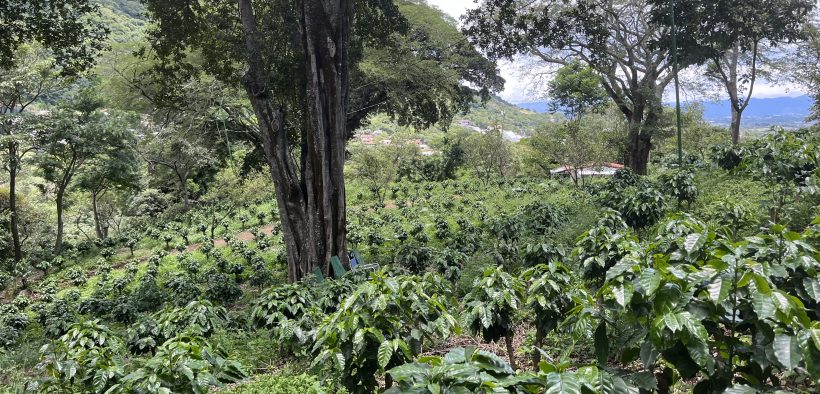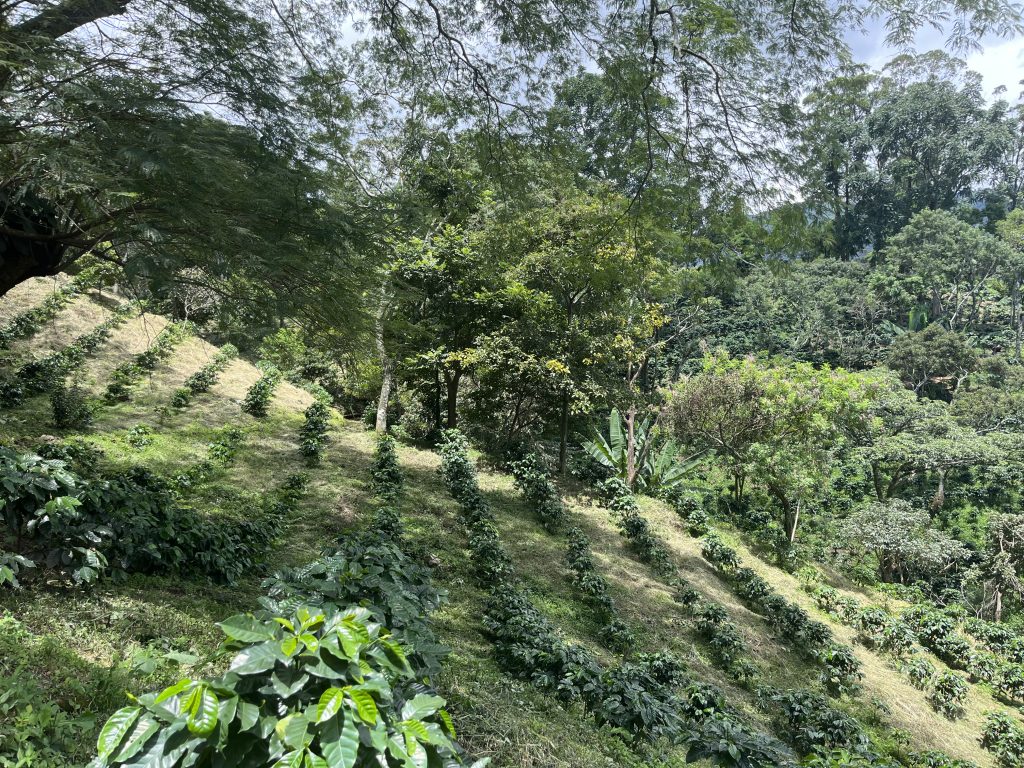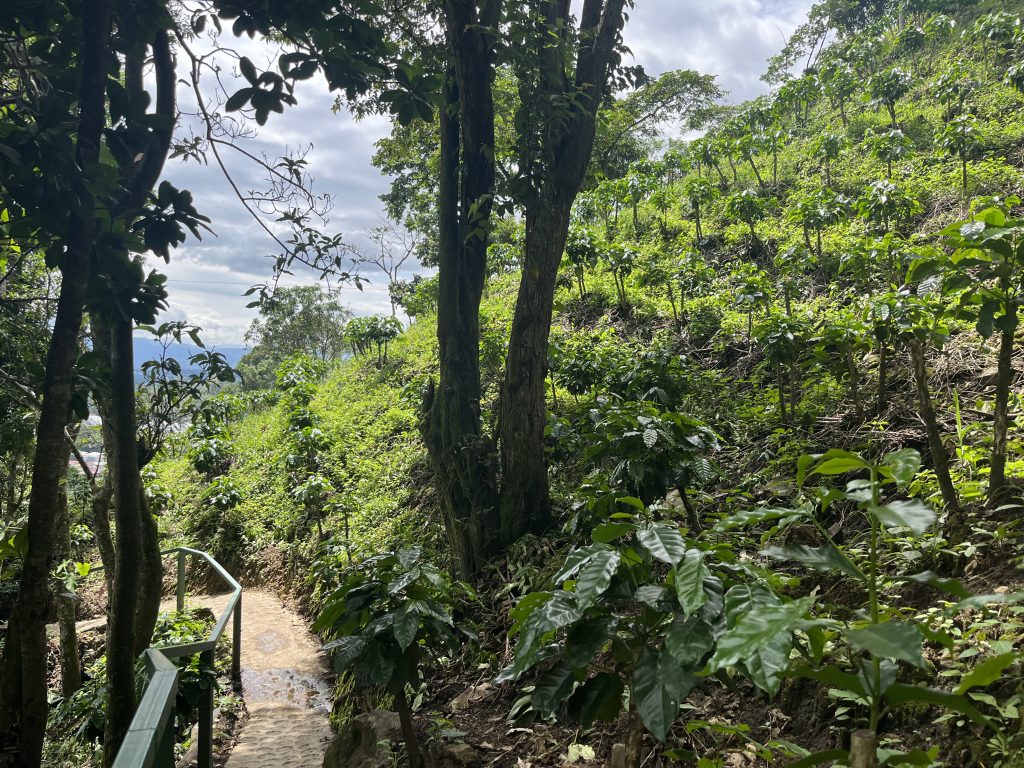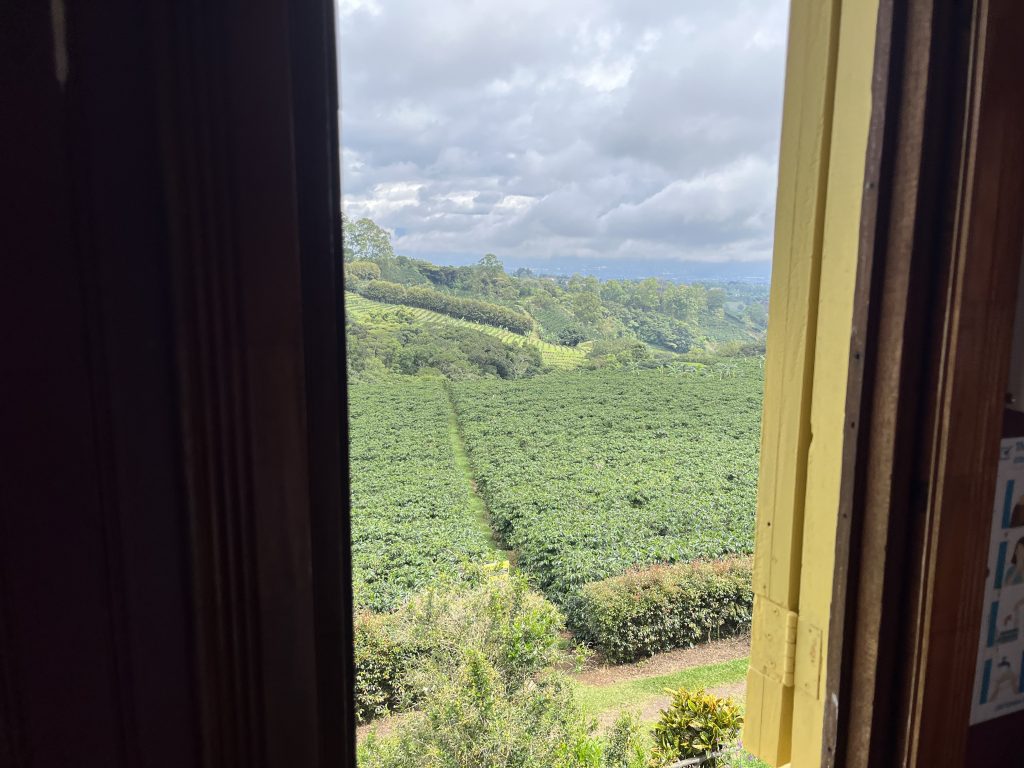Costa Rican vs American Coffee: I Will Never Taste Starbucks The Same.
Share

It was 5:30AM. I finally made it through airport security, ordered my Starbucks grande iced latte, and located gate A3. Now all I had to do was relax, read, and sip on my ice-cold coffee drink until my flight boards. I took a seat by the window so I could watch the planes on the runway, I set my carry-on bag down at my feet, and took the first sip of American chain coffee I had tasted in ten weeks. And I’m eminently, utterly, completely underwhelmed.
I will never taste a Starbucks latte the same after spending all of last summer sipping on Costa Rica’s local coffee. So, you may be asking yourself: “What makes a Costa Rican caffeinated beverage so much more delectable than your typical to-go iced coffee drink in America?
Costa Rica was the first Central American country to cultivate coffee for economic trade. The country’s warm climate, consistent rainfall, high altitudes and fertile volcanic soil all contribute to its fruitful coffee production. Costa Rican coffee is trademarked, especially, for its smooth, aromatic flavors, naturally infused into the bean. The aromas of fruit plants, flora, and tropical shrubbery growing in surrounding soil influence the coffee’s flavor. According to HomeGrounds, when drinking Costa Rican coffee, one can expect hints of honey and citrus from light roasts, milk chocolate and red fruit from medium roasts, and notes of dark chocolate and nougat from dark roasts. Each of the country’s eight regions specializes in their own, unique aroma, body, and taste. However, these regions’ coffees were officially distinguished and recognized for their distinctive flavor profiles in 1989. Eager to discover more about each of the regions’ coffee growing conditions and specific flavor palates, I read through a book I’d bought in a local Costa Rican coffee shop, while still living there over the summer – Camille Ratton’s and Yazmin Ross’s Café de Costa Rica and its Secrets.
Valle Central is home to the oldest coffee plantations in the country. These coffee beans grow in volcanic soil, at altitudes of 900 to 1,600 meters above sea level. In a cup of Central Valley coffee, one can taste hints of bitter chocolate, fruits, and honey.
Tres Ríos, otherwise known as the “Bordeaux” of Costa Rica is situated around the base of the Irazu volcano. Also grown in volcanic soil, this coffee’s flavor lingers on the tongue after drinking. The beans are grown 1,200 to 1,600 meters above sea level.
The West Valley, or Valle Occidental region surrounds the Poás volcano, and is known for its exceptionally fertile andosol soils. The coffee in this region grows at 900 to 1,700 meters above sea level, and is recognizable through its fruit aromas of apricot, orange and jasmine. The coffee in Valle Occidental is renowned also for having a noteworthy and pronounced body (or the feeling of viscosity on the tongue while drinking).
Coffee cultivated in the Tarrazú region is notable for its somewhat blue-tinted beans, acute acidity, ideal body, and the taste of cacao that resonates in one’s taste buds after drinking. The coffee’s flavor profile is influenced by the aromas of the surrounding floral and citrus species. Tarrazú coffee contains a higher caffeine concentration than the country’s other coffee breeds. This is due to the elevation of the plantations, located in high-altitude woodlands, at 1,200 to 2,000 meters above sea level.

Photo by Logan Ferguson
Coffee of the Orosi region is remarkable for its light acidity with floral and cocoa notes. The coffee grown in the valley surrounding the Reventazón River harbors a subdued aftertaste and favorable body.
Beans from the Turrialba region are slightly acidic, embodying floral notes that are complimented by traces of sugar cane and honey. The Caribbean region of the country has a different harvest cycle, which begins in July, rather than in the springtime.
Guanacaste’s diverse climate and geography allows for three distinct types of beans to grow here. The Hard Bean Pacific, Low Grown Atlantic, and Strictly Hard Bean are all commonly cultivated in this area, at differing altitude levels. The coffee from Guanacaste is easily distinguished by its salty, bitter tinge.
The Brunca region, with its volcanic and sandy soils, produces different types of coffee, depending on the altitude. The breeds grown in the highlands hold strong acidic and floral fragrances.

Photo by Logan Ferguson
One key factor in Costa Rica’s exceptionally palatable coffee is their utilization of the honey processing method. This method was originally developed in Costa Rica, and is now executed by coffee companies and farmers all around the globe. According to Liz Clayton’s article on Sprudge, honey processing leaves the coffee bean’s natural, sticky outer coating during processing. This accentuates the fruity, floral flavors during the drying process. The processing method’s name comes from the comparison of the sticky mucilage texture to that of honey.
It is worth noting that in 1989, (the same year Costa Rica government officials laid out each of the country’s eight coffee regions) the Republic ruled it illegal to cultivate any other coffee breeds besides the Arabica bean. The growth of any other coffees, including the well-known Robusta, was officially banned. According to EnjoyJava, Arabica coffee is the oldest in the world, originating from Ethiopia. Arabica is notably more expensive and difficult to grow than other beans, such as Robusta. According to Perk Coffee Company, Arabica beans hold a smoother, sweeter taste than Robusta beans. They often have hints of chocolate, sugar cane, and citrus or berries. The Robusta bean, on the other hand, possesses a harsher, more bitter taste with a certain graininess to it.
Many things contribute to Costa Rica’s glorious coffee beans, which are the country’s main export. From the flourishing rainforest climate, the fruity and floral aromas found in the bean, to the implementation of the honey processing method and the growing of strictly Arabica beans, Costa Rica coffee is an undeniable economic and cultural treasure. A cup nourishes and accomplishes much more than just your need to stay awake. After reading this article, you might be asking yourself, “Where can I find Costa Rican coffee in Georgetown, Texas??”. Great news! H-E-B carries both whole bean and ground Costa Rican coffee supplied by Candelari, Cafe Ole, and Cameron’s. Also, Walmart sells numerous Costa Rican coffee brands. Brew yourself a cup of rich, authentically sourced grounds and taste the pura vida!

Photo by Logan Ferguson
